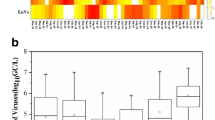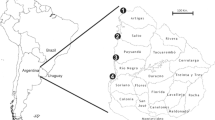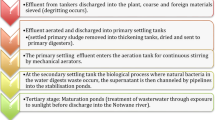Abstract
To assess the presence of three gastroenteritis viruses responsible for human acute gastroenteritis in surface water, a 1-year study was carried out in the city of Beijing, China. A total of 108 urban surface water samples were collected from nine collection sites which were defined with a global positioning system in rivers or lakes from September 2006 to August 2007. The water samples were subjected to virus concentration using an HA electronegative filter, followed by polymerase chain reaction (PCR) for rotavirus (RV) astrovirus (AV), and norovirus (NV). It showed that the number of viruses detected in water samples from different sites was variable, totaling 63 virus strains, with rotavirus (48.1%) verified as the most prevalent detected, followed by astrovirus (AV, 5.6%), and norovirus (NV, 4.6%). RV was also quantified by real-time PCR and the concentration of RV ranged from 0 to 18.27 genome copies·L−1. And the distributions of RV in surface water were abundant in cold weather (from September to February) while less prevailing in warm weather (from March to August). The high detection rate of RV we encountered in this study provided convincing evidence that RV circulated at a certain frequency in the Beijing population. There was no statistically significant correlation between RV levels and both fecal coliform (R 2 = 0.02) and Enterococcus faecalis (R 2 = 0.02) densities. Our study suggests prolonged virus persistence in aquatic environments and emphasizes the enteric virus group as the most reliable for environmental monitoring.




Similar content being viewed by others
References
Baggi, F., & Peduzzi, R. (2000). Genotyping of rotaviruses in environmental water and stool samples in Southern Switzerland by nucleotide sequence analysis of 189 base pairs at the 5′ end of the VP7 gene. Journal of Clinical Microbiology, 38, 3681–3685.
Bosch, A., Guix, S., Sano, D., & Pinto, R. (2008). New tools for the study and direct surveillance of viral pathogens in water. Current Opinion in Biotechnology, 19, 295–301.
Espinosa, A. C., Mazari-Hiriart, M., Espinosa, R., Maruri-Avidal, L., Mendez, E., & Arias, C. F. (2008). Infectivity and genome persistence of rotavirus and astrovirus in groundwater and surface water. Water Research, 42, 2618–2628.
Gersberg, R., Rose, M., Robles-Sikisaka, R., & Dhar, A. (2006). Quantitative detection of hepatitis A virus and enteroviruses near the United States–Mexico border and correlation with levels of fecal indicator bacteria. Applied and Environmental Microbiology, 72, 7438.
Grassi, T., Bagordo, F., Idolo, A., Lugoli, F., Gabutti, G., & De Donno, A. (2010). Rotavirus detection in environmental water samples by tangential flow ultrafiltration and RT-nested PCR. Environmental Monitoring and Assessment, 164, 199–205.
Gutiérrez-Aguirre, I., Banjac, M., Steyer, A., Polj ak-Prijatelj, M., Peterka, M., Trancar, A., et al. (2009). Concentrating rotaviruses from water samples using monolithic chromatographic supports. Journal of Chromatography A, 1216, 2700–2704.
Hamilton, A., Stagnitti, F., Premier, R., Boland, A., & Hale, G. (2006). Quantitative microbial risk assessment models for consumption of raw vegetables irrigated with reclaimed water. Applied and Environmental Microbiology, 72, 3284–3290.
Haramoto, E., Katayama, H., Oguma, K., & Ohgaki, S. (2005). Application of cation-coated filter method to detection of noroviruses, enteroviruses, adenoviruses, and torque teno viruses in the Tamagawa River in Japan. Applied and Environmental Microbiology, 71, 2403–2411.
He, X., Cheng, L., Zhang, D., Xie, X., Wang, D., & Wang, Z. (2011). One-year monthly survey of rotavirus, astrovirus and norovirus in three sewage treatment plants in Beijing, China and associated health risk assessment. Water Science and Technology, 63, 191–198.
He, X. Q., Cheng, L., Li, W., Xie, X. M., Ma, M., & Wang, Z. J. (2008). Detection and distribution of rotavirus in municipal sewage treatment plants (STPs) and surface water in Beijing. Journal of Environmental Science and Health. Part A, Toxic/Hazardous Substances & Environmental Engineering, 43, 424–429.
Jiang, S. C., & Chu, W. (2004). PCR detection of pathogenic viruses in southern California urban rivers. Journal of Applied Microbiology, 97, 17–28.
Limsawat, S., & Ohgaki, S. (1997). Fate of liberated viral RNA in wastewater determined by PCR. Applied and Environmental Microbiology, 63, 2932–2933.
Liu, C., Grillner, L., Jonsson, K., Linde, A., Shen, K., Lindell, A. T., et al. (2006). Identification of viral agents associated with diarrhea in young children during a winter season in Beijing. China Journal of Clinical Virology, 35, 69–72.
Lodder, W. J., & de Roda Husman, A. M. (2005). Presence of noroviruses and other enteric viruses in sewage and surface waters in The Netherlands. Applied and Environmental Microbiology, 71, 1453–1461.
Meleg, E., Jakab, F., Kocsis, B., Banyai, K., Melegh, B., & Szucs, G. (2006). Human astroviruses in raw sewage samples in Hungary. Journal of Applied Microbiology, 101, 1123–1129.
Miagostovich, M., Ferreira, F., & Guimaraes, F. R. (2008). Molecular detection and characterization of gastroenteritis viruses occurring naturally in the stream waters of Manaus, Central Amazonia, Brazil. Applied and Environmental Microbiology, 74, 375.
Pusch, D., Oh, D. Y., Wolf, S., Dumke, R., Schröter-Bobsin, U., Höhne, M., et al. (2005). Detection of enteric viruses and bacterial indicators in German environmental waters. Archives of Virology, V150, 929–947.
Schets, F., van Wijnen, J., Schijven, J., Schoon, H., & de Roda Husman, A. (2008). Monitoring of waterborne pathogens in surface waters in Amsterdam, The Netherlands, and the potential health risk associated with exposure to Cryptosporidium and Giardia in these waters? Applied and Environmental Microbiology, 74, 2069–2078.
Tsai, Y., Tran, B., & Palmer, C. (1995). Analysis of viral RNA persistence in seawater by reverse transcriptase- PCR. Applied and Environmental Microbiology, 61, 363–366.
Wong, M., Kumar, L., Jenkins, T. M., Xagoraraki, I., Phanikumar, M. S., & Rose, J. B. (2009). Evaluation of public health risks at recreational beaches in Lake Michigan via detection of enteric viruses and a human-specific bacteriological marker. Water Research, 43, 1137–1149.
Acknowledgments
This work was supported by the National Natural Science Foundation of China (51108029), the National Key Technology R&D Program (2009ZX07527-005), National High Technology Research and Development Program (2008AA062501), and the Foundation of State Key Laboratory of Environmental Aquatic Chemistry (2009–001).
Author information
Authors and Affiliations
Corresponding author
Rights and permissions
About this article
Cite this article
He, X., Wei, Y., Cheng, L. et al. Molecular detection of three gastroenteritis viruses in urban surface waters in Beijing and correlation with levels of fecal indicator bacteria. Environ Monit Assess 184, 5563–5570 (2012). https://doi.org/10.1007/s10661-011-2362-6
Received:
Accepted:
Published:
Issue Date:
DOI: https://doi.org/10.1007/s10661-011-2362-6




